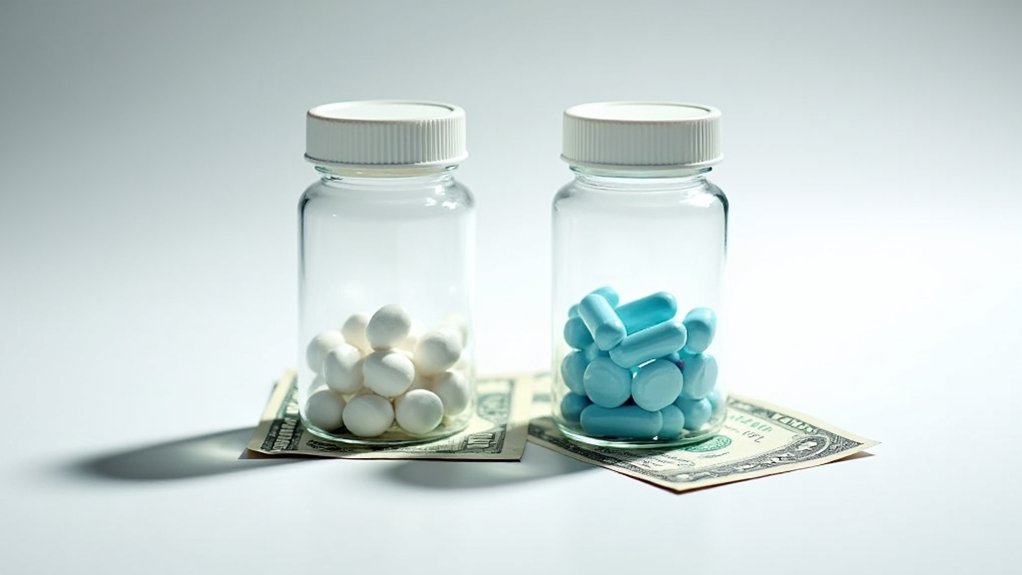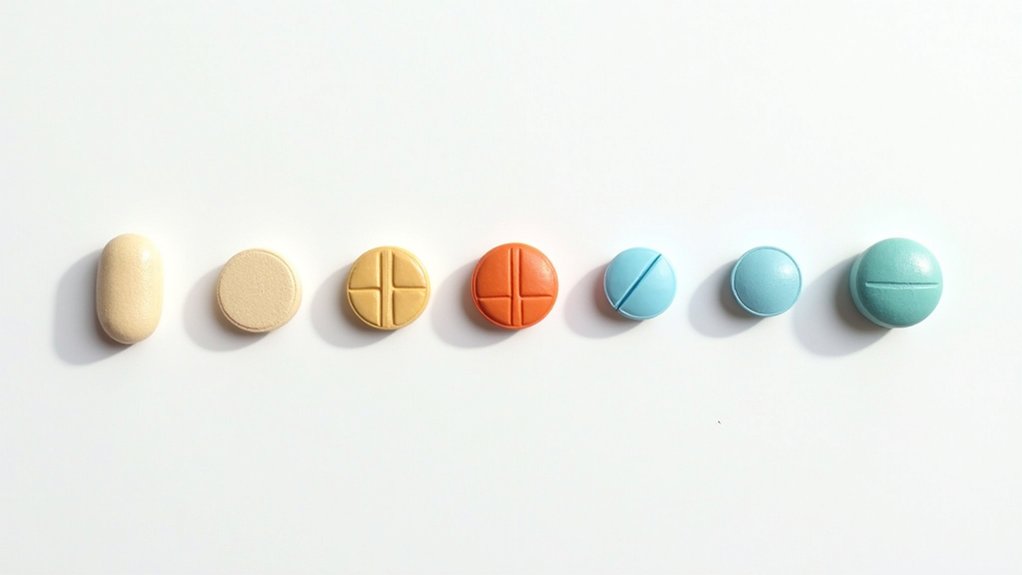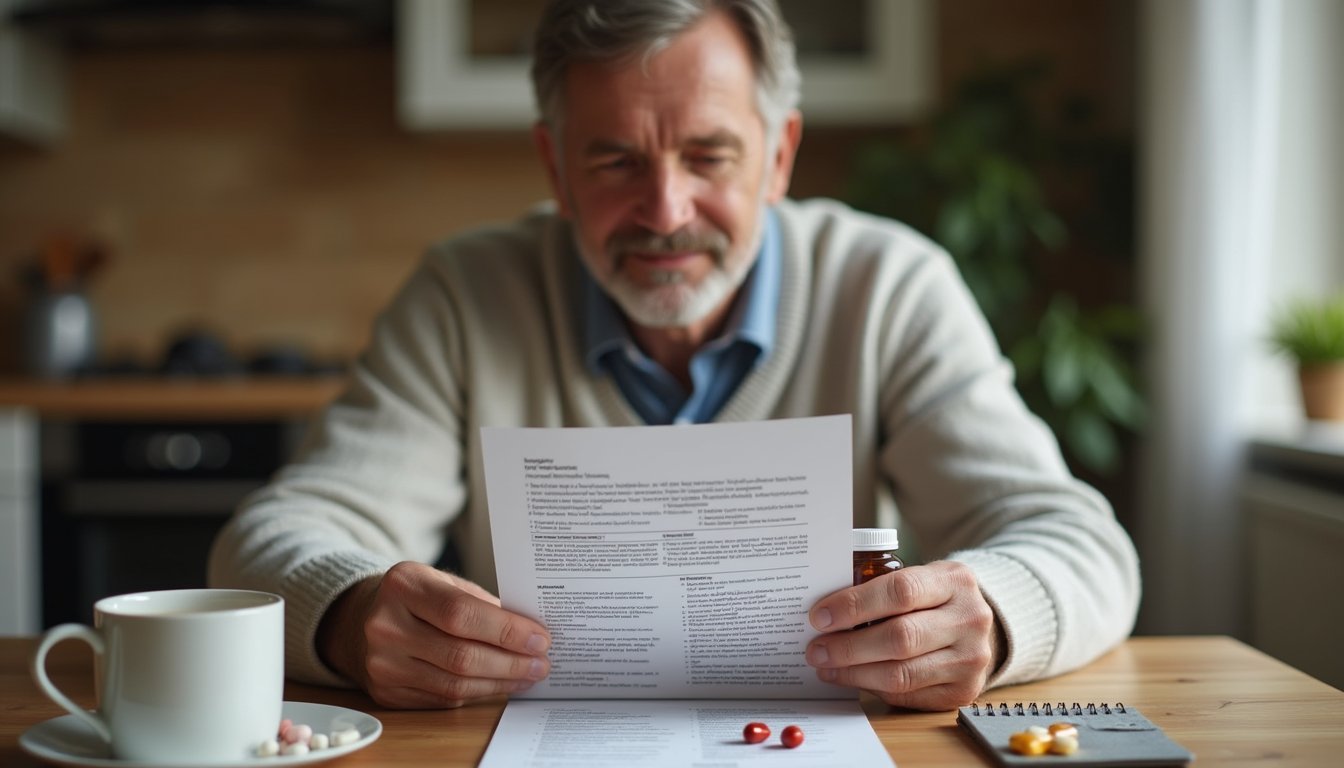Three FDA-approved medications can help you overcome alcohol use disorder: disulfiram, acamprosate, and naltrexone. Each works differently disulfiram creates unpleasant reactions when you drink, acamprosate stabilizes brain chemistry, and naltrexone blocks alcohol’s pleasurable effects. While fewer than 9% of patients currently receive these medications, they’ve proven highly effective when combined with thorough treatment. Understanding your medication options and how they work with your brain’s chemistry will strengthen your path to recovery.
FDA-Approved Medications for Alcohol Use Disorder
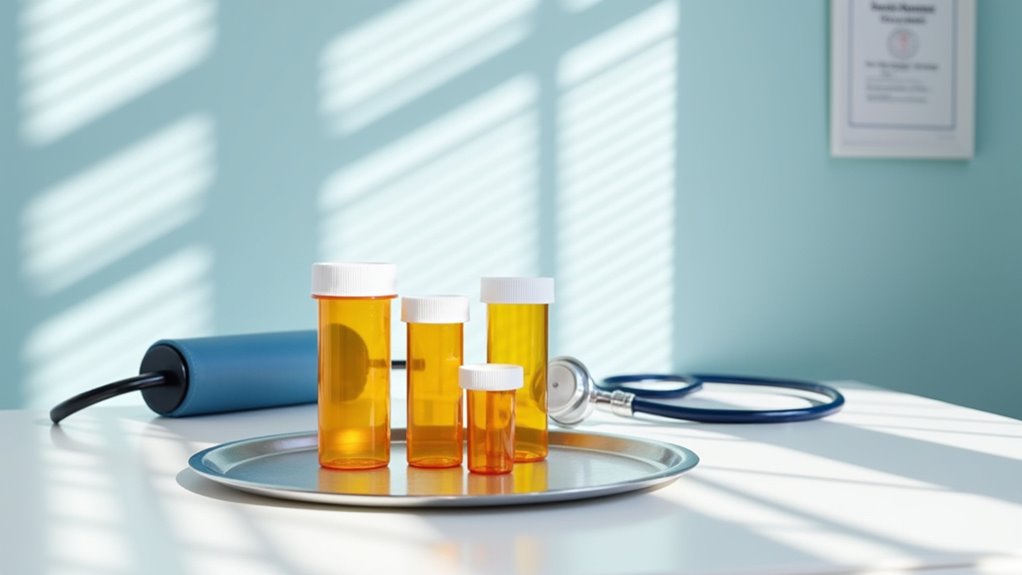
While many individuals struggle with alcohol use disorder (AUD), the FDA has approved three primary medications to support treatment: disulfiram, acamprosate, and naltrexone.
Disulfiram benefits include its cost-effectiveness at approximately $18 per month and its ability to create aversive reactions if you consume alcohol. This medication works by blocking alcohol metabolism, triggering symptoms like nausea and flushing when drinking.
Acamprosate usage focuses on restoring your brain’s chemical balance, specifically targeting glutamate and GABA systems altered by long-term alcohol use. Social stigma and lack of clinician familiarity contribute to low treatment rates.
Naltrexone, available in both oral and injectable forms, reduces alcohol cravings by blocking opioid receptors.
Despite proven effectiveness, fewer than 9% of AUD patients receive these medications.
You’ll achieve ideal results when combining these treatments with behavioral interventions, as research supports this thorough approach.
How Alcohol Addiction Medications Work
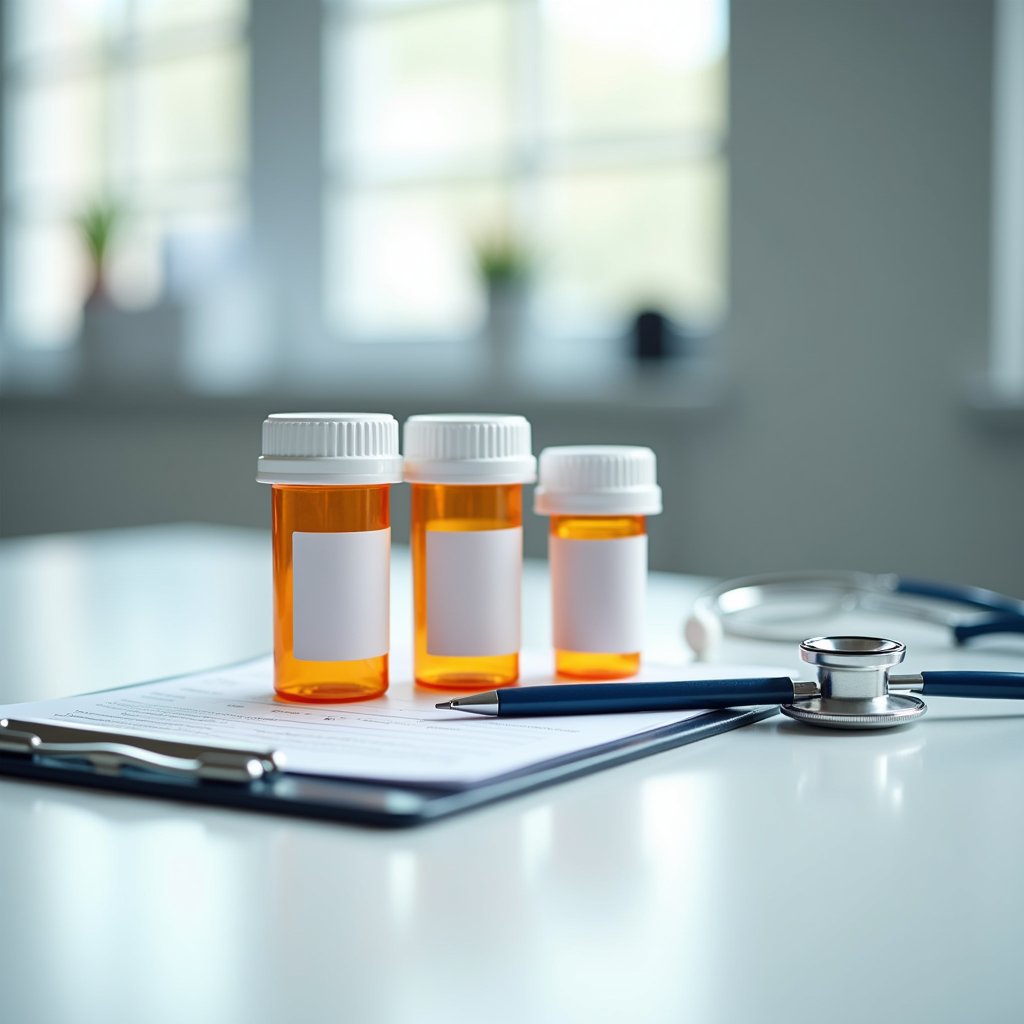
Your brain’s chemistry changes during alcohol addiction treatment through medications that target specific neurotransmitter systems and receptors.
When you take medications like naltrexone or acamprosate, they’ll block alcohol’s pleasurable effects by disrupting opioid receptor activation and regulating glutamate/GABA balance. Naltrexone works by blocking the endogenous opiates released during drinking. Acamprosate specifically helps restore normal brain function by restoring neurotransmitter balance. Research shows that 5-HT3 receptor antagonists can significantly decrease alcohol consumption.
These medications work by reducing your cravings through multiple mechanisms, including the modulation of dopamine pathways and the creation of deterrent effects that help maintain abstinence.
Brain Chemistry and Receptors
Understanding how alcohol addiction medications work requires knowledge of the brain’s complex neurotransmitter systems. When you consume alcohol, it disrupts your neurotransmitter balance by affecting multiple receptor systems simultaneously. The most significant impacts occur in your GABA, glutamate, and dopamine pathways.
Your brain’s receptor interaction with alcohol creates both immediate and long-term changes. Initially, alcohol suppresses GABA activity and triggers dopamine release, creating pleasurable sensations. Over time, chronic drinking alters your NMDA receptors and damages vital brain regions like the prefrontal cortex and hippocampus. These changes impair decision-making, memory formation, and emotional regulation. Long-term heavy drinking can lead to significant brain tissue shrinkage, affecting overall cognitive abilities. Within five minutes of drinking, alcohol molecules reach your brain and begin altering these neural pathways.
Medications target these disrupted systems specifically. For example, naltrexone blocks opioid receptors to reduce alcohol’s rewarding effects, while acamprosate helps stabilize glutamate function to decrease cravings. Recent studies show that topiramate reduces ventral striatum activation when patients are exposed to alcohol-related cues, helping weaken the brain’s reward response to alcohol.
Blocking Alcohol’s Effects
Medications designed to treat alcohol addiction work through several distinct blocking mechanisms in your brain and body. The primary mechanism involves opioid receptor antagonism through medications like naltrexone, which disrupts alcohol’s pleasurable effects.
A second mechanism relies on acetaldehyde accumulation, achieved through disulfiram, creating unpleasant reactions when alcohol is consumed. These reactions typically begin within 30 minutes after drinking alcohol and can include severe nausea, sweating and difficulty breathing.
The third mechanism focuses on blocking neurotransmitter release by interfering with dopamine pathways, reducing craving triggers that lead to alcohol use.
The fourth mechanism involves suppressing the hypothalamic-pituitary-adrenal axis, which helps regulate stress responses associated with alcohol cravings.
Ultimately, these medications work by inhibiting the endogenous opioid system, preventing the reinforcing effects that typically maintain addictive behaviors.
Craving Reduction Mechanisms
Building on these blocking mechanisms, specific medications target craving reduction through distinct neurobiological pathways.
Naltrexone directly blocks opioid receptors, reducing craving intensity by up to 78% in patients with high baseline urges. Daily diary studies show rapid craving decreases in patients receiving naltrexone treatment compared to usual care groups. When combined with coping strategies, it’s particularly effective at preventing relapse after occasional slips. Disulfiram creates unpleasant reactions when alcohol is consumed, serving as a strong deterrent against drinking.
While acamprosate doesn’t directly reduce cravings, it stabilizes brain chemistry disrupted by alcohol use, helping prevent new craving triggers from forming.
Topiramate works differently by weakening the brain’s response to alcohol cues in reward-related regions. It breaks learned associations between drinking triggers and anticipated pleasure.
For ideal results, you’ll find these medications work best when integrated with behavioral therapy, which reinforces your ability to manage cravings through practiced coping strategies.
Success Rates and Clinical Evidence
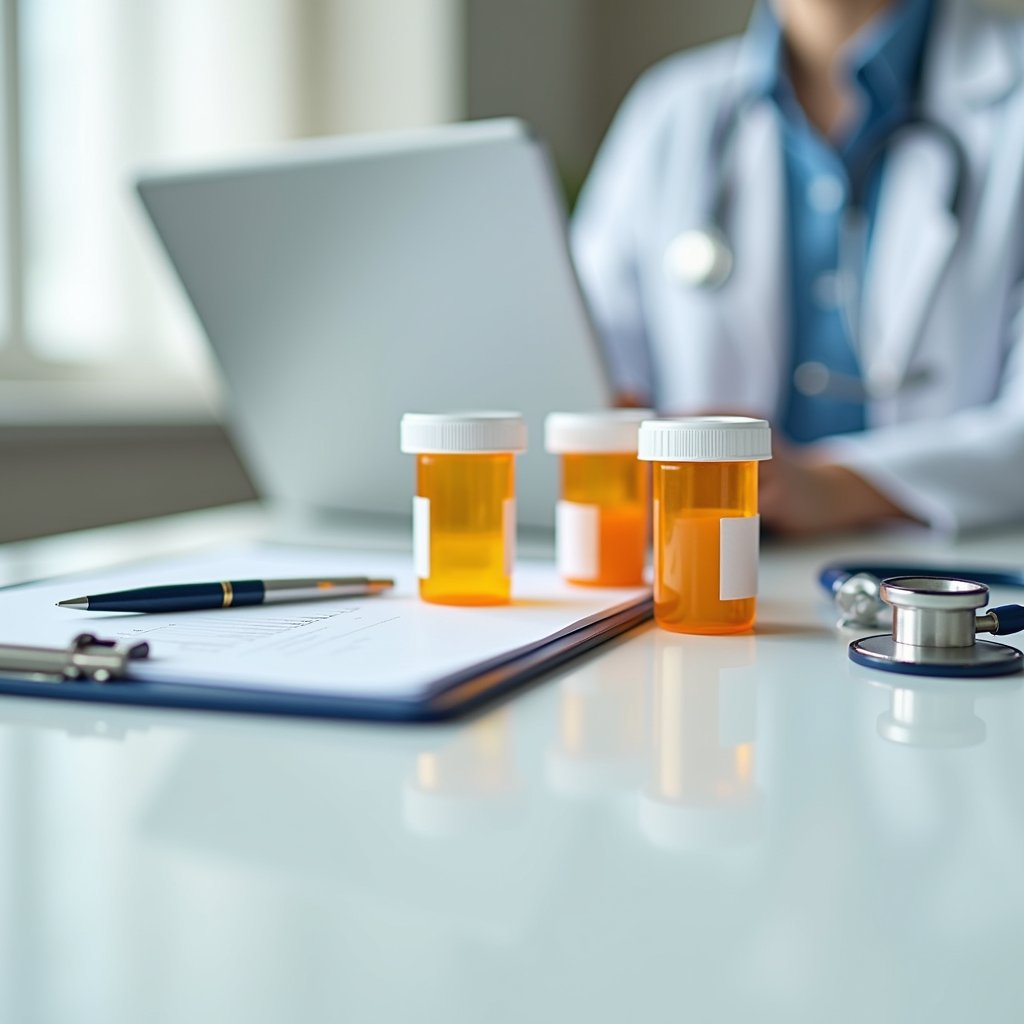
Clinical trials demonstrate that medication-assisted treatment dramatically improves recovery outcomes, though only 2% of adults with alcohol use disorder currently receive these interventions.
You’ll find compelling evidence in relapse prevention statistics, where medications combined with psychological support show success rates comparable to treatments for other chronic conditions like diabetes. Studies show that three quarters of individuals with substance use disorders eventually achieve recovery. Recent studies indicate that AA support groups significantly enhance medication effectiveness, with the majority of members maintaining sobriety for most of the year.
Studies comparing different medication options reveal that individualized treatment protocols, particularly those extending beyond 90 days, yield the highest rates of sustained sobriety and positive mental health outcomes. Unfortunately, treatment completion rates remain below 43%, highlighting the importance of strong support systems and continued aftercare in maximizing medication effectiveness.
Clinical Trial Results
Recent trials investigating alcohol use disorder (AUD) medications have yielded promising efficacy data across multiple therapeutic approaches. Clinical trial methodologies have demonstrated significant results, particularly with GLP-1 receptor agonists. Exenatide reduced heavy drinking days by 23.6% in obese participant demographics, while showing varied responses across BMI groups.
KT-110’s phase II trial achieved notable success, reducing alcohol intake by 26-30g daily among 154 participants. This dual-mechanism therapy combines cyproheptadine and prazosin, representing the initial novel AUD treatment candidate in a decade. The market size growth from $596m to $3bn by 2029 reflects increasing demand for effective treatments. A new study shows that weekly semaglutide treatment significantly decreased alcohol craving and heavy drinking days compared to placebo groups. New research utilizing brain imaging techniques has provided valuable insights into the neurobiological basis of alcohol cravings in detoxified alcoholics.
Meanwhile, ongoing varenicline trials at Mayo Clinic are exploring its potential to increase abstinence rates through nicotinic receptor modulation. The NIAAA’s expanding research pipeline includes 142 treatments targeting diverse pathways, from stress response to cognitive function, addressing the critical need for effective AUD interventions.
Real-World Recovery Data
While treatment approaches continue to evolve, real-world recovery data reveals encouraging patterns in alcohol addiction outcomes.
Real world outcomes show that 75% of individuals eventually recover, with higher success rates linked to inpatient treatment and thorough care approaches. Understanding that relapse is normal in recovery helps reduce stigma and encourages people to seek help again if needed. Current research indicates that support networks reduce relapse risk by providing essential accountability and encouragement.
Recovery statistics demonstrate that reaching key milestones greatly improves your chances of maintaining sobriety.
- 35% maintain sobriety for one year after treatment
- 57% who achieve one-year sobriety continue for at least three years
- 85% of those reaching five years remain abstinent long-term
- Combined therapy approaches enhance success rates by up to 60%
- Active AA participation raises recovery rates from 39% to 58%
These evidence-based findings highlight the importance of sustained treatment engagement and support systems in achieving lasting recovery from alcohol addiction.
Medication Comparison Studies
Research comparing FDA-approved medications for alcohol use disorder has revealed distinct efficacy patterns among treatment options.
You’ll find that oral naltrexone and acamprosate show similar success rates, though naltrexone proves more effective at preventing relapse to heavy drinking.
Treatment adherence studies indicate topiramate outperforms naltrexone in reducing alcohol consumption, while gabapentin demonstrates superior results for managing cravings and anxiety.
When considering medication interactions, it’s important to highlight that combining treatments can improve outcomes. A recent systematic review in JAMA supports this approach to pharmacotherapy for optimal patient care.
For instance, pregabalin shows better results than naltrexone in addressing psychiatric symptoms while maintaining comparable drinking reduction rates.
However, disulfiram’s effectiveness remains questionable, as blinded trials haven’t confirmed the positive results seen in open-label studies.
Understanding these comparative efficacies helps clinicians make evidence-based decisions for individualized treatment plans.
Common Side Effects and Safety Considerations
Understanding the side effects and safety considerations of alcohol addiction medications requires careful attention to potentially dangerous drug interactions.
You’ll need to be particularly mindful of adverse reactions when combining medications with alcohol, especially considering maturity risks and individual health factors. Only 2% of Americans receive pharmacological treatment for alcohol use disorder, highlighting the importance of proper medication education and management.
- Combining benzodiazepines with alcohol greatly increases sedation and accident risks, particularly in older individuals.
- NSAIDs and alcohol together raise gastrointestinal bleeding risk by approximately 37% with just one drink daily.
- Disulfiram causes severe reactions within 10-30 minutes of alcohol consumption, including nausea and rapid heartbeat.
- Acetaminophen combined with alcohol poses serious liver damage risks, requiring regular monitoring.
- Buprenorphine becomes particularly dangerous when mixed with alcohol, potentially leading to fatal outcomes.
Regular medical supervision and strict adherence to medication guidelines are essential for managing these risks effectively and ensuring treatment success.
Treatment Plans and Medication Combinations
Building an effective treatment plan for alcohol use disorder requires strategic combinations of medications and careful timing of interventions.
Your healthcare provider might start with acamprosate post-detox to stabilize brain chemistry, then shift to naltrexone for ongoing craving management. Treatment personalization is essential, as you’ll need different approaches based on your specific needs and response to therapy.
Personalized medication strategies, starting with acamprosate and transitioning to naltrexone, help stabilize recovery and manage ongoing cravings effectively.
You’ll find that medication adherence improves when combined with behavioral interventions. If you’re highly motivated, your doctor may prescribe disulfiram alongside psychotherapy for improved accountability.
For some patients, combination therapy using both acamprosate and naltrexone might be recommended, though studies show mixed results compared to single-medication approaches.
Your treatment plan will be regularly monitored and adjusted based on your progress, typically at 1-3 month intervals.
Alternative and Emerging Treatment Options
While traditional medications remain essential tools for treating alcohol use disorder, several groundbreaking therapies are showing promise in clinical trials.
You’ll find creative approaches combining medical interventions with technology-driven solutions. GLP-1 Agonists are revolutionizing treatment by targeting reward pathways, while Topiramate Benefits include reduced cravings when combined with behavioral therapy.
- AI Counseling platforms utilize predictive analytics to identify relapse risks and deliver personalized support
- TMS Applications provide non-invasive neurostimulation methods to regulate impulse control
- Virtual Therapy options make treatment more accessible through telehealth integration
- Mindfulness Techniques help improve emotional regulation and stress management
- Holistic Treatments, including yoga and biofeedback, complement traditional approaches
These emerging options offer new hope for those seeking recovery, particularly when integrated with conventional treatment methods.
Long-Term Recovery Support Strategies
Successful long-term recovery from alcohol addiction requires an extensive support system that extends far beyond initial treatment.
Recovery from alcohol addiction demands ongoing support networks and resources – it’s a journey that continues long after treatment ends.
You’ll need to implement multiple support group strategies, including participation in AA or SMART Recovery programs, while building relationships with peers who understand your path.
Establishing effective coping mechanism techniques, such as meditation, exercise, or creative pursuits, helps manage triggers and reduce relapse risks.
Professional support remains essential through ongoing therapy sessions and possible medication-assisted treatment options.
You should maintain regular communication with counselors while tracking your progress through journals or apps.
Focus on developing healthy routines, practicing self-care, and setting achievable milestones.
Remember to engage with community activities and online forums for continuous encouragement, as these connections provide important accountability and understanding throughout your recovery process.
Frequently Asked Questions
How Long Will I Need to Take Alcohol Addiction Medications?
The duration of alcohol addiction medications varies based on your specific needs. Most treatment plans range from 6-12 months for ideal effectiveness.
You’ll typically take naltrexone for 3-6 months, though some continue longer. Acamprosate treatment often lasts 6-12 months, while disulfiram may be prescribed for varying periods.
Your doctor will adjust medication duration based on your progress, side effects, and treatment response. Regular monitoring guarantees treatment effectiveness and safety.
Can I Drink Alcohol Occasionally While on These Medications?
You shouldn’t drink alcohol while taking these medications, as occasional drinking can lead to dangerous medication interactions.
With Disulfiram, even small amounts of alcohol can cause severe reactions like vomiting and racing heart.
While Naltrexone may be used in supervised harm-reduction approaches, it’s still risky.
Acamprosate works best with complete abstinence.
For your safety and treatment success, it’s crucial to avoid alcohol entirely while on these medications.
Will Insurance Cover the Cost of Alcohol Addiction Medications?
Yes, your insurance will likely cover alcohol addiction medications since they’re considered essential health benefits under the ACA.
Most insurance plans cover FDA-approved medication types like naltrexone, acamprosate, and disulfiram, but coverage details vary.
You’ll need to check your specific plan for copays, deductibles, and pre-authorization requirements.
It’s best to contact your insurance provider directly to verify coverage and understand potential out-of-pocket costs before starting treatment.
Can I Take These Medications if I’m Pregnant or Breastfeeding?
You’ll need to work closely with your healthcare provider to evaluate pregnancy risks and breastfeeding safety before taking any alcohol addiction medications.
While some medications like acamprosate and naltrexone may be considered under strict monitoring, others like disulfiram are strictly contraindicated during pregnancy and breastfeeding.
The decision depends on weighing the risks of continued alcohol use against potential medication effects.
Don’t stop or start any medications without medical supervision.
What Happens if I Miss a Dose of My Alcohol Medication?
If you miss a dose of your alcohol medication, take it as soon as you remember, unless it’s almost time for your next scheduled dose.
In that case, skip the missed dose and continue with your regular medication schedule.
Never double up on doses to make up for a missed one, as this can be dangerous.
If you’re unsure about what to do, contact your healthcare provider or pharmacist for guidance.


